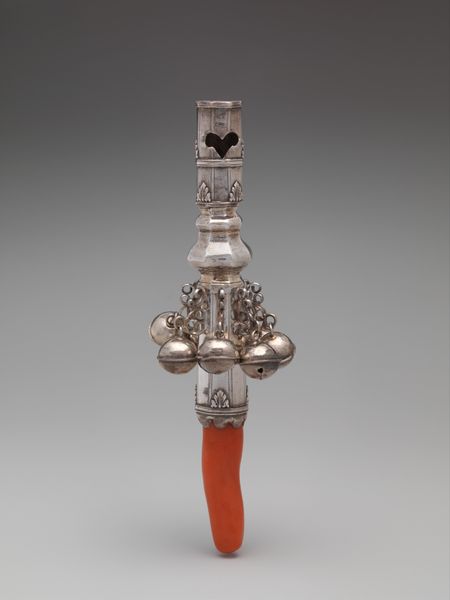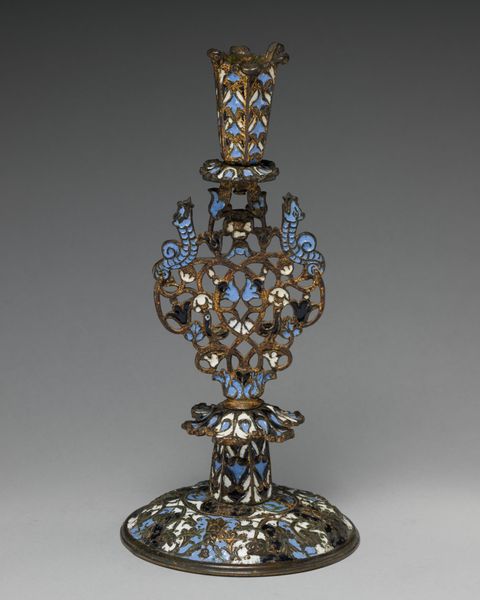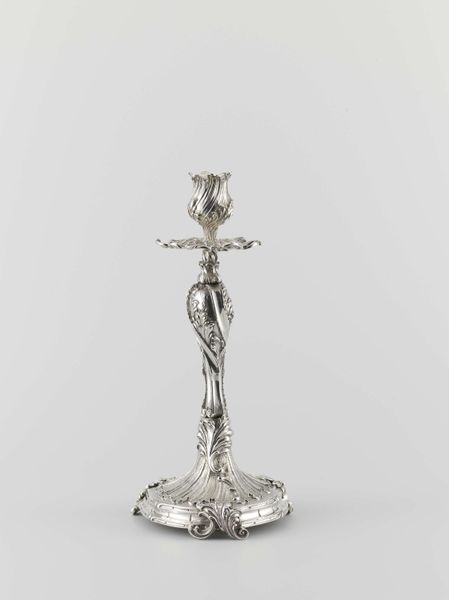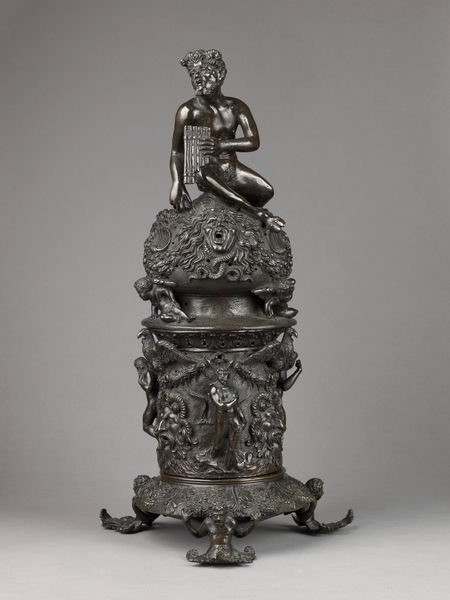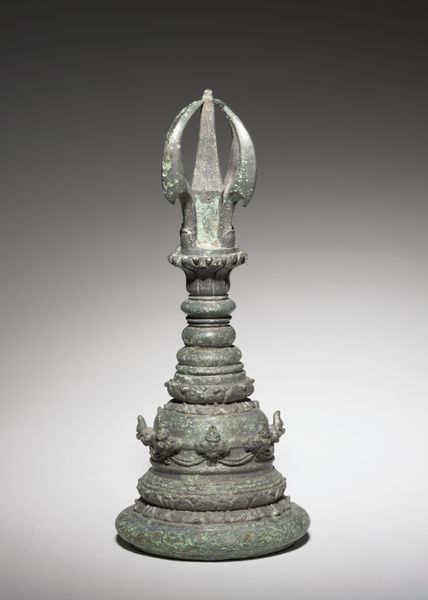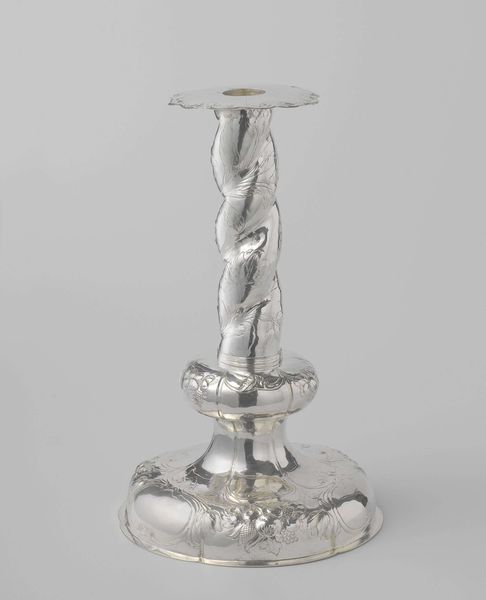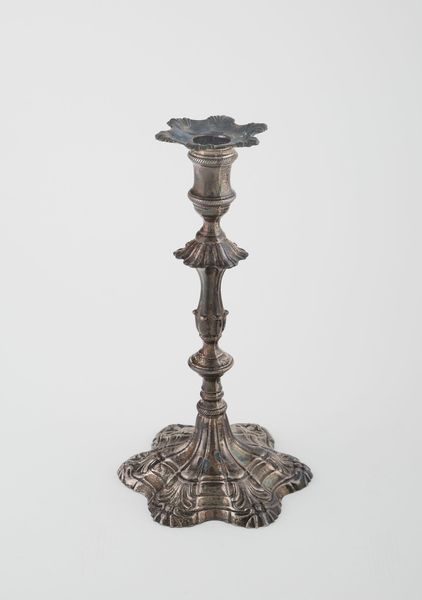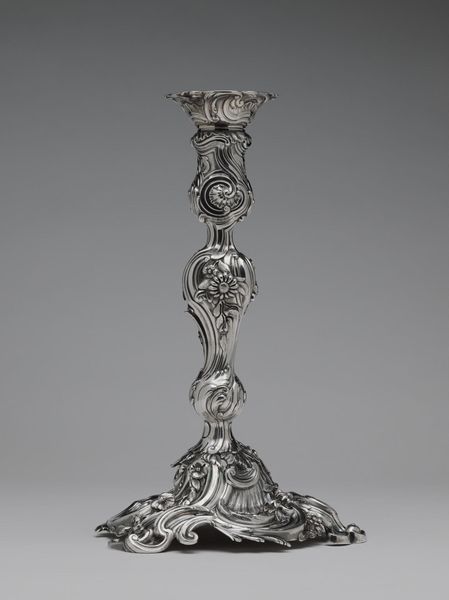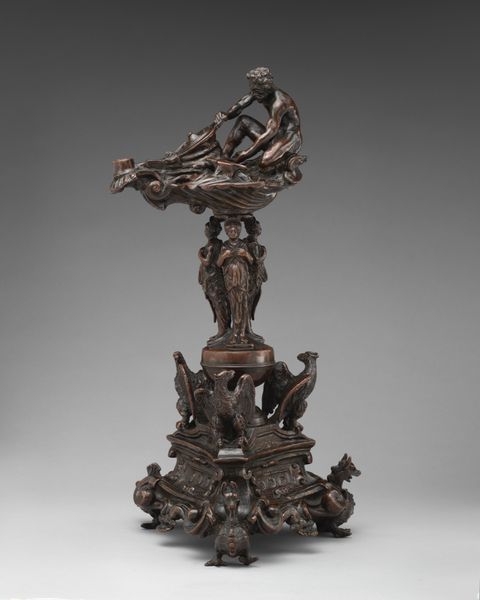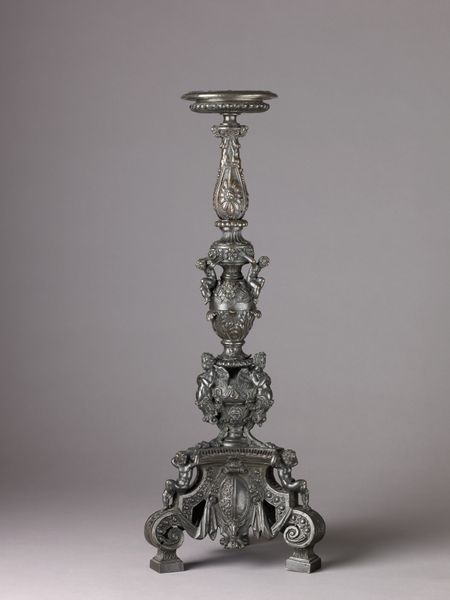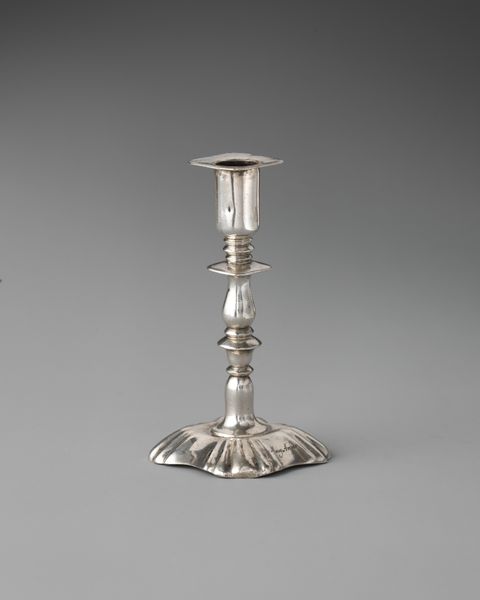
silver, metal, sculpture
#
silver
#
metal
#
sculpture
#
decorative-art
Dimensions: 5 3/8 × 1 3/4 in. (13.7 × 4.4 cm)
Copyright: Public Domain
This child's rattle and teether was made from silver and coral, probably somewhere in Europe during the 1800s. Objects like this offer insights into the culture of childhood, but also the class structure of the era. The rattle and teether combine practicality with symbolic meaning. Coral was often associated with protection against evil, reflecting a parent's concern for their child's wellbeing in a time of high infant mortality. Silver, meanwhile, signals a level of affluence. The bells would have made a pleasing sound to distract a baby, but also served as a display of wealth. Consider the social rituals around childbirth and infancy at this time. Who would have owned such an object? What does it tell us about the values and anxieties of that society? Investigating probate records, medical texts, and social histories can give us a fuller understanding of the meanings embedded in this intriguing artifact.
Comments
No comments
Be the first to comment and join the conversation on the ultimate creative platform.
